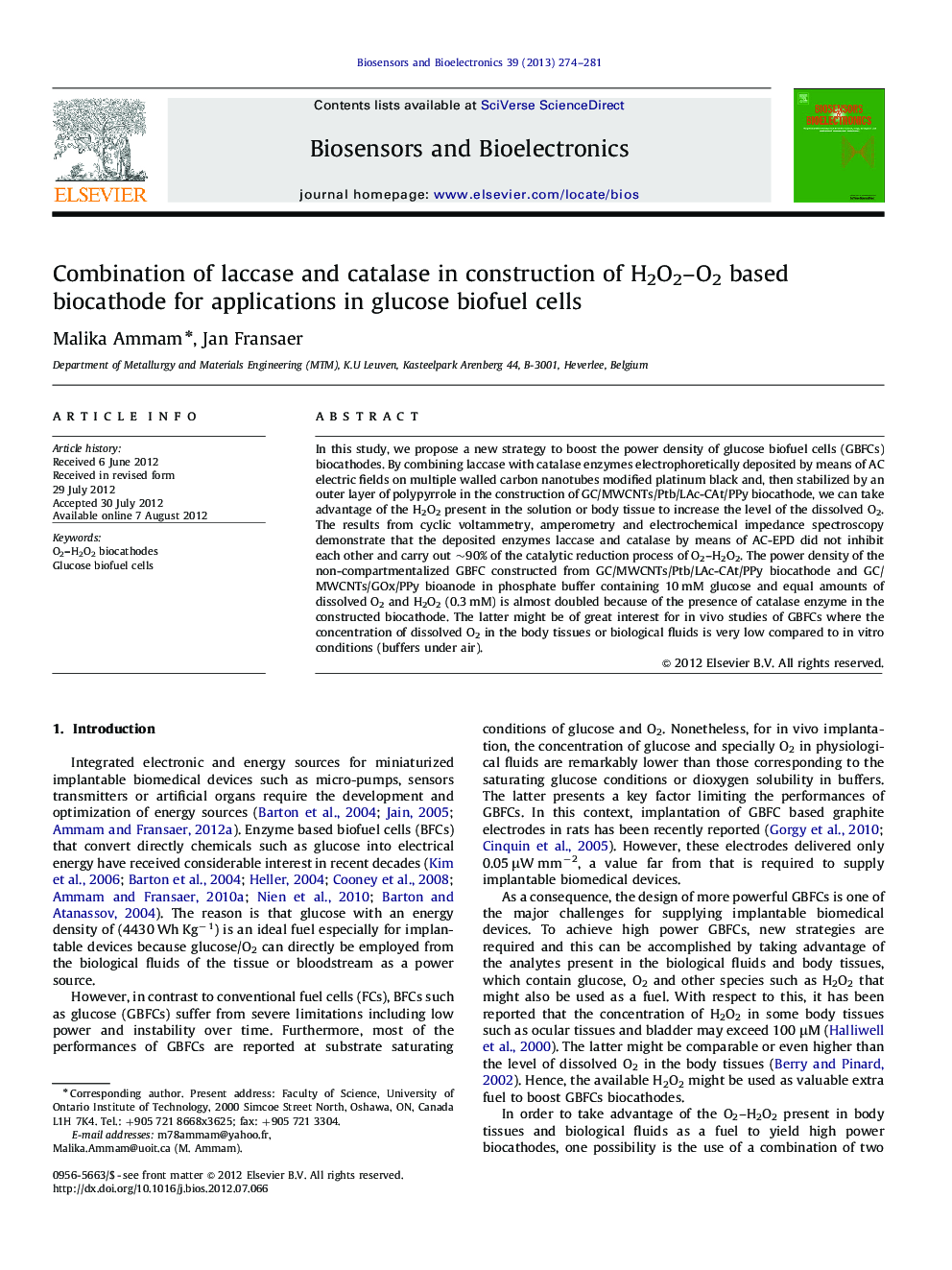| Article ID | Journal | Published Year | Pages | File Type |
|---|---|---|---|---|
| 867242 | Biosensors and Bioelectronics | 2013 | 8 Pages |
In this study, we propose a new strategy to boost the power density of glucose biofuel cells (GBFCs) biocathodes. By combining laccase with catalase enzymes electrophoretically deposited by means of AC electric fields on multiple walled carbon nanotubes modified platinum black and, then stabilized by an outer layer of polypyrrole in the construction of GC/MWCNTs/Ptb/LAc-CAt/PPy biocathode, we can take advantage of the H2O2 present in the solution or body tissue to increase the level of the dissolved O2. The results from cyclic voltammetry, amperometry and electrochemical impedance spectroscopy demonstrate that the deposited enzymes laccase and catalase by means of AC-EPD did not inhibit each other and carry out ∼90% of the catalytic reduction process of O2–H2O2. The power density of the non-compartmentalized GBFC constructed from GC/MWCNTs/Ptb/LAc-CAt/PPy biocathode and GC/MWCNTs/GOx/PPy bioanode in phosphate buffer containing 10 mM glucose and equal amounts of dissolved O2 and H2O2 (0.3 mM) is almost doubled because of the presence of catalase enzyme in the constructed biocathode. The latter might be of great interest for in vivo studies of GBFCs where the concentration of dissolved O2 in the body tissues or biological fluids is very low compared to in vitro conditions (buffers under air).
highlights► GBFCs cathodes based H2O2–O2 can be improved if laccase is combined with catalase. ► Power density of GBFC is almost doubled when catalase is present in the biocathode. ► This might be interesting for in vivo where levels of O2 in body tissues is low.
